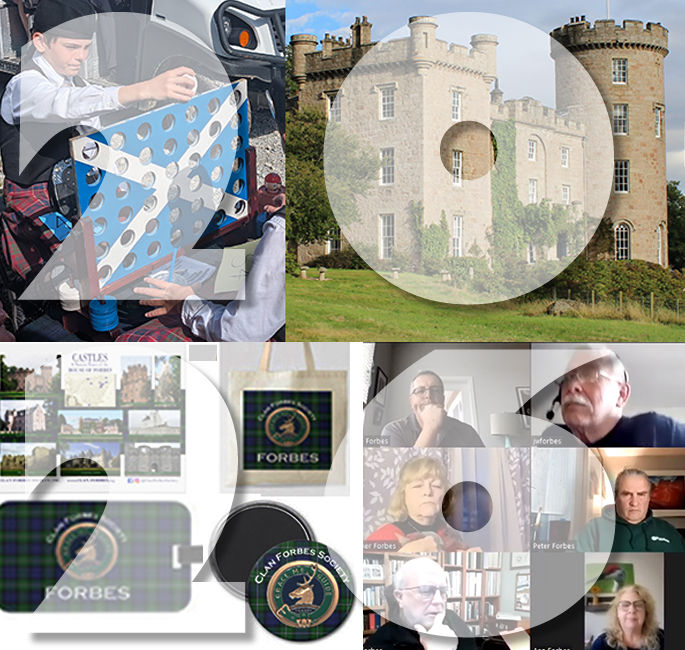Newhall and the "Gentle Shepherd"
- Bart Forbes

- Jul 23, 2023
- 3 min read
The Newhall estate of Sir David Forbes is widely credited as the inspiration for the locations of the wildly popular pastoral comedy "The Gentle Shepherd," by poet Allen Ramsey.

A royal charter of the lands of Newhall was granted to Lawrence Crichton in about 1405. The Crichton family built a feudal keep on this site in about 1529. Military surgeon Dr. Alexander Pennycuik (1605 – 1695) purchased the estate in 1646. His son, also called Alexander (1652 - 1722), was a physician, botanist, and poet. They lived in their principal house in Romano and made no changes to the Newhall tower. His daughter married the son of Mrs. Oliphant of Lanton, Midlothian, and Pennycuik gave them the estate of Newhall.
However, Oliphant was heavily indebted and sold the property in 1703 to Sir David Forbes, an Edinburgh advocate (lawyer.) (Brown, Horatio F. 1919. “Newhall on the North Esk, with its Artistic and Literary Associations,” Scottish Historical Review, Volume XVI, No. 63. Glasgow: James Maclehose and Sons.) Sir David was the second son of John Forbes, second laird of Culloden. He had married Catherine, daughter of John Clerk of Pennycuik, with whom he had two children John, his heir, and Agnes.
Since the castle was in very poor condition, Sir David built a new home on the same site. He demolished most of the structure but incorporated part of one tower into the front section of the new house’s ground floor. The new mansion house was designed with a forecourt with two pavilions through which a Gothic portal gives entry to the house. Described by Sir David himself as a “double house,” the building had a ground floor, first floor and “attics.” The ground floor included a vaulted chamber of the Crichton tower. The “Great Room” was a long gallery on the first floor with bedrooms opening from it, what one author described as “an arrangement that will at once recall the interior plan of a Venetian palazzo.” (Ibid.) One of the bedrooms was reserved for Sir David’s nephew, Duncan Forbes (1685–1747), then an advocate and later the Lord President of the Court of Sessions in nearby Edinburgh. The attics held additional guest rooms. (Ibid.)

Sir David’s son John, an advocate and patron of the arts, belonged to a group of intellectuals and artists known as the “Worthy Club” or the “Worthies.” Other members included advocate Duncan Forbes; advocate, politician, and writer Sir Gilbert Elliot, 1st Baronet, of Minto (1650 –1718); portrait painter William Aikman of Cairney (1682-1731); the painter, John Stuart of Innerarity; former owner of Newhall Dr. Alexander Pennycuik; historian and advocate William Tytler of Woodhouselee (1711 - 1792); poet and playwright Allan Ramsey (1686 –1758); and Ramsey’s son also called Allan (1713 –1784), the noted portrait painter. They congregated in a tavern in Leith and, during the summer, in the “Club Room” at Newhall.

During these gatherings, the poet Allan Ramsey would read sections of his dramatic pastoral The Gentle Shepherd, which was published to great acclaim in 1725. Ramsey was claimed to have used many of the locations around the Newhall estate as settings for his play, such as crags which form a natural shelter (the “Craigiebeild”); a grassy plot beside the river (the “Washing Green”); waterfalls and deep pools (“Habbie’s Howe”); and a high crag in the distance (the “Harbour Craig.”)
Sir David spent lavishly on the house, parks, planting, and improvements. He also experimented with new farming techniques and invested in a coalworks. As a result, by 1740 he was heavily in debt. Sir David died in 1750 and his wife and son were unable to maintain the property. After passing through various hands, the Newhall estate was purchased in 1783 by wealthy tobacco merchant Thomas Dunmore of Kelvinside as an investment for the fortune of his ward and grandson, Robert Brown.
The new owner enlarged Newhall House, formed the walled garden and added mementos of The Gentle Shepherd to the house, inside and outside and to the glen. For example, an inscription on an obelisk sundial references the play, as do two stone plaques embedded into the walls of the gardens. In the house, the ceiling of the ground-floor library depicts a painting with the members of the Worthies Club, including Ramsay, John Forbes, and William Aikman in Leith Tavern.
In the 1850’s, Robert's son Hugh hired architect David Bryce build additions in the Scottish Baronial style. Hugh’s son Horatio Brown died in 1925 and the estate was sold. Newhall is now a wedding venue with three rental cottages on 1,100 acres of parkland.





Comments